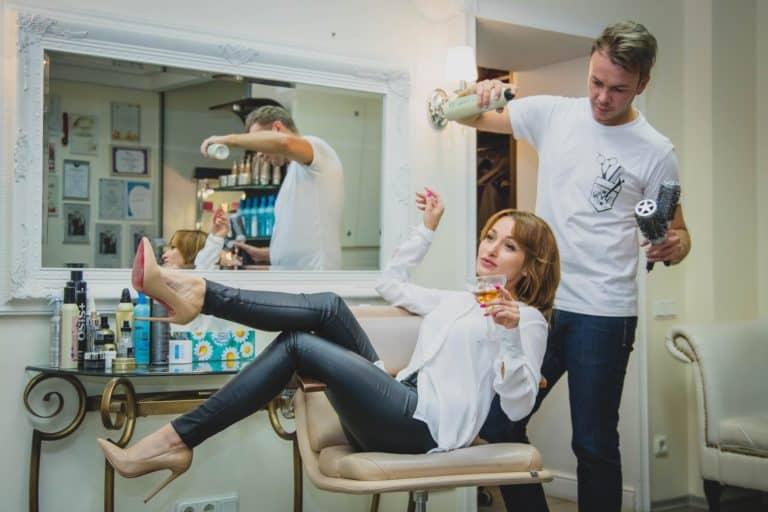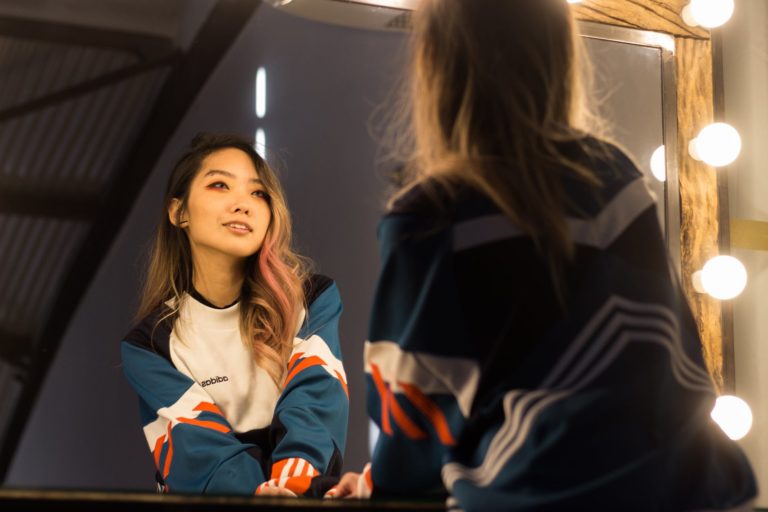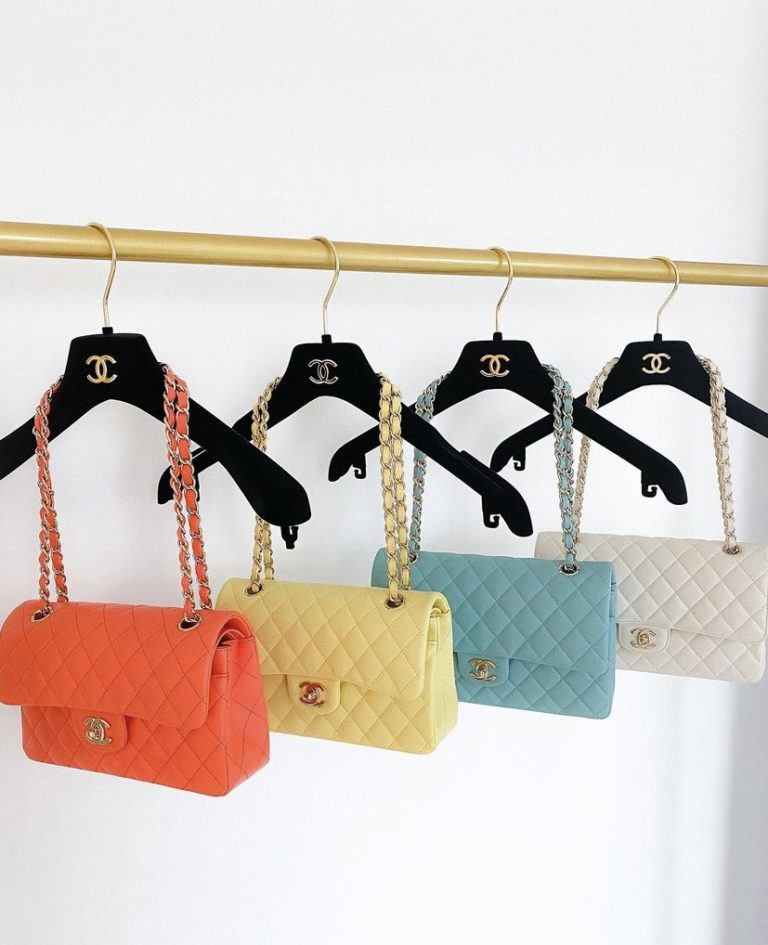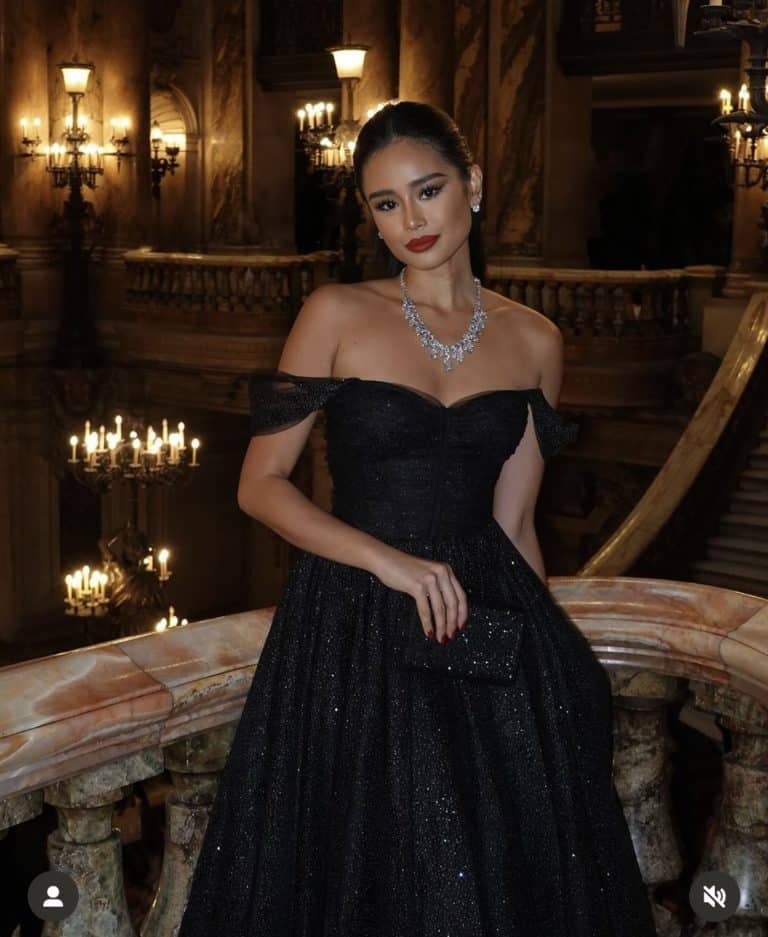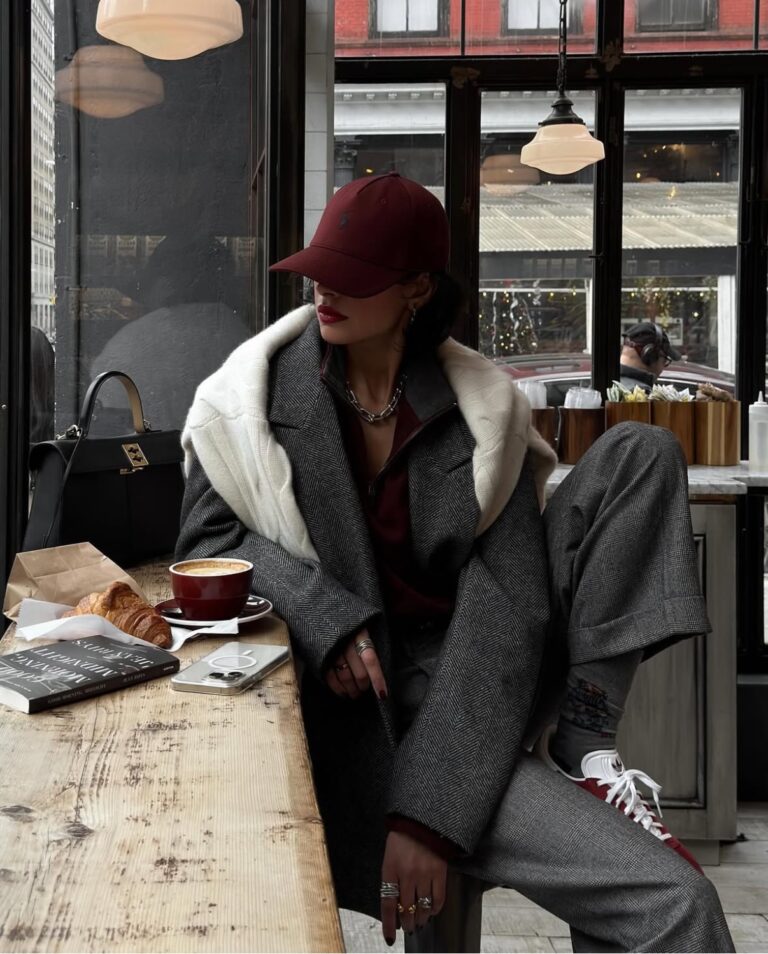How to Pick Your Perfect Lipstick
How to Pick Your Perfect Lipstick Shade? Finding a lipstick that lights up your face shouldn’t feel like guesswork. Yet many people still match shades based on how light or dark their skin appears and end up disappointed. Here’s the truth: fair, light, medium, or deep describes your skin depth—not your undertone. Lipstick loves undertone. Once you separate those two ideas, choosing flattering colors becomes simple and repeatable.
In this guide, you’ll learn the difference between skin depth and undertone, how to check your undertone in minutes, and which lipstick shades (with Tom Ford examples) will likely flatter you most. You’ll also get a pro testing method that saves money and time at the counter. If you’re a stylist or beauty pro, there’s a quick look at how to go deeper with formal color analysis training.
Key takeaways:
- Skin depth is how light or deep your skin looks; undertone is your constant color temperature.
- Lipstick looks best when the shade’s temperature matches your undertone.
- Quick tests can point you toward warm, cool, or neutral.
- Your skin depth still matters—it helps you set how light or deep your lipstick can go.
- Skin Depth vs. Undertone: What’s the Difference?
- How to Pick Your Perfect Lipstick: Your Skin Depth Still Matters—Here’s How
- How to Pick Your Perfect Lipstick: Three Fast Undertone Checks You Can Do at Home
- Lipstick by Undertone: Tom Ford Shades to Try
- How to Pick Your Perfect Lipstick Pro Tip: Test Like a Pro—Daylight, Swipe, Blot, Reapply
- How to Pick Your Perfect Lipstick: Common Lipstick Pitfalls (and Easy Fixes)
- How to Build a Wardrobe of Lipsticks You’ll Actually Wear
- How to Pick Your Perfect Lipstick Quick FAQ
- For Stylists and Beauty Pros: Learn to Diagnose Undertone with Confidence
- How to Pick Your Perfect Lipstick Conclusion: Match Temperature First, Then Set the Depth
Skin Depth vs. Undertone: What’s the Difference?
Think of skin depth as brightness on a dimmer switch—fair, light, medium, tan, deep. It describes how light or dark your skin appears on the surface. Skin depth can change with season, sun exposure, or skincare.
Undertone is the steady temperature beneath the surface. It does not change with a tan. Most people fall into:
- Warm: golden, peach, or yellow cast
- Cool: rosy, pink, or blue cast
- Neutral: balanced mix without a strong pull either way
Why does this matter for lipstick? Color harmony. Your face looks most lively when the colors you wear share the same temperature as your undertone. A blue-based red can look sharp and classic on cool undertones, while a tomato red glows on warm undertones. Neutral undertones often wear both—within a range of depths and saturations.
CLICK HERE TO FIND OUT WHICH COLORS SUIT YOU – GET AN ONLINE COLOR ANALYSIS
How to Pick Your Perfect Lipstick: Your Skin Depth Still Matters—Here’s How
While undertone guides temperature, skin depth guides intensity:
- Fair to light skin often looks fresh in mid-light to medium shades. Very dark or very pale colors can overwhelm or wash out the face unless balanced with the right eye/cheek.
- Medium to tan skin handles richer, medium to deep shades with ease. Too-light shades can veer chalky unless the undertone matches perfectly and the lip is paired with definition.
- Deep skin sings with saturated, deeper hues. Pale, cool pastel pinks, for example, may look powdery unless layered with liner or gloss that adds warmth or depth.
In short: pick temperature for harmony (undertone), then set the lightness or depth to fit your complexion.
How to Pick Your Perfect Lipstick: Three Fast Undertone Checks You Can Do at Home
No special gear required. Try two or three methods and look for a pattern.
1) Jewelry Test
- Gold jewelry tends to flatter warm undertones.
- Silver jewelry tends to flatter cool undertones.
- If both look equally good, you may be neutral.
This works because the metal’s temperature either echoes or competes with your undertone. Gold leans warm; silver leans cool.
2) White Paper Test (Natural Light)
Stand near a window with indirect daylight. Hold a white sheet of paper next to your face and look at the overall cast:
- Face looks peachy, golden, or slightly yellow → warm.
- Face looks rosy, pink, or slightly blue → cool.
- Looks balanced, neither strongly warm nor cool → neutral.
Tip: Check without makeup, or at least with minimal face products. Foundation can mask undertone cues.
3) Vein Look (Helpful—but Not Definitive)
Check wrist or inner elbow veins in natural light:
- Greenish veins → usually warm.
- Blue or purple veins → usually cool.
- Mix of blue/green → often neutral.
This is a guide, not gospel. Lighting and skin transparency can skew what you see, so use it alongside the other tests.
Lipstick by Undertone: Tom Ford Shades to Try
Tom Ford lipsticks are known for rich pigments and balanced color design, which makes them useful examples. Use these as a starting point, then fine-tune depth for your skin.
Warm Undertones
You’ll glow in shades with sunny or spicy warmth:
- Color families: peachy pinks, soft corals, terracotta, brick, tomato reds, warm caramel nudes.
- Tom Ford shades to swatch: True Coral, Wild Ginger, Scarlet Rouge.
Why these work: The orange, peach, and brick notes match the warmth in your undertone. On fair warm skin, try lighter or medium versions (or blot for a stain). On medium to deep warm skin, lean into richer, more saturated corals, brick reds, and warm nudes that won’t disappear against your complexion.
Application ideas:
- For every day: Tap on Wild Ginger as a stain and add a clear or peach gloss.
- For statement: Full swipe of Scarlet Rouge, then define edges with a warm brick lip liner.
- For polished nude: Pair a warm nude with a tawny liner to prevent the lip from looking flat.
Cool Undertones
You’ll shine in shades with rose, berry, or blue-red energy:
- Color families: blue-based reds, berry pinks, rose-mauves, plum and wine.
- Tom Ford shades to swatch: Cherry Lush, Velvet Cherry, Indian Rose.
Why these work: Cool pigments echo the rosy or blue cast of your undertone, brightening the eyes and evening the skin. Fair cool skin often looks fresh with rose-mauves and blue-reds; medium cool skin handles berries and sangria tones; deep cool skin rocks plum, wine, and oxblood with clarity and depth.
Application ideas:
- For desk-to-dinner: Indian Rose for a polished, soft-rose lip that suits many cool complexions.
- For night: Velvet Cherry for a velvety, deep red that reads chic and timeless.
- For classic: Cherry Lush as the archetypal blue-red that whitens the teeth and sharpens the look.
Neutral Undertones
You can wear both warm and cool—look for balanced, soft, or “rosy-beige” tones:
- Color families: balanced roses, pinky-nudes, soft corals, muted berries.
- Tom Ford shades to swatch: Casablanca, Pink Dusk, Blush Nude.
Why these work: Neutrals benefit from lipsticks that don’t swing too warm or too cool. The result is easy harmony. Adjust depth to your skin depth:
- Fair to light neutral: Pink Dusk or Blush Nude with a slightly deeper nude liner to add definition.
- Medium neutral: Casablanca is a crowd-pleasing rose with enough presence.
- Deep neutral: Choose richer versions of these families—think deeper rose-browns or balanced berry-roses—to keep lips from looking too light against your complexion.
Application ideas:
- Everyday polish: Casablanca as a one-and-done lip that pairs with minimal makeup.
- Soft glam: Pink Dusk plus a mauve-nude liner for gentle structure.
- Elevated nude: Blush Nude layered over a neutral-brown liner to avoid a washed-out effect.
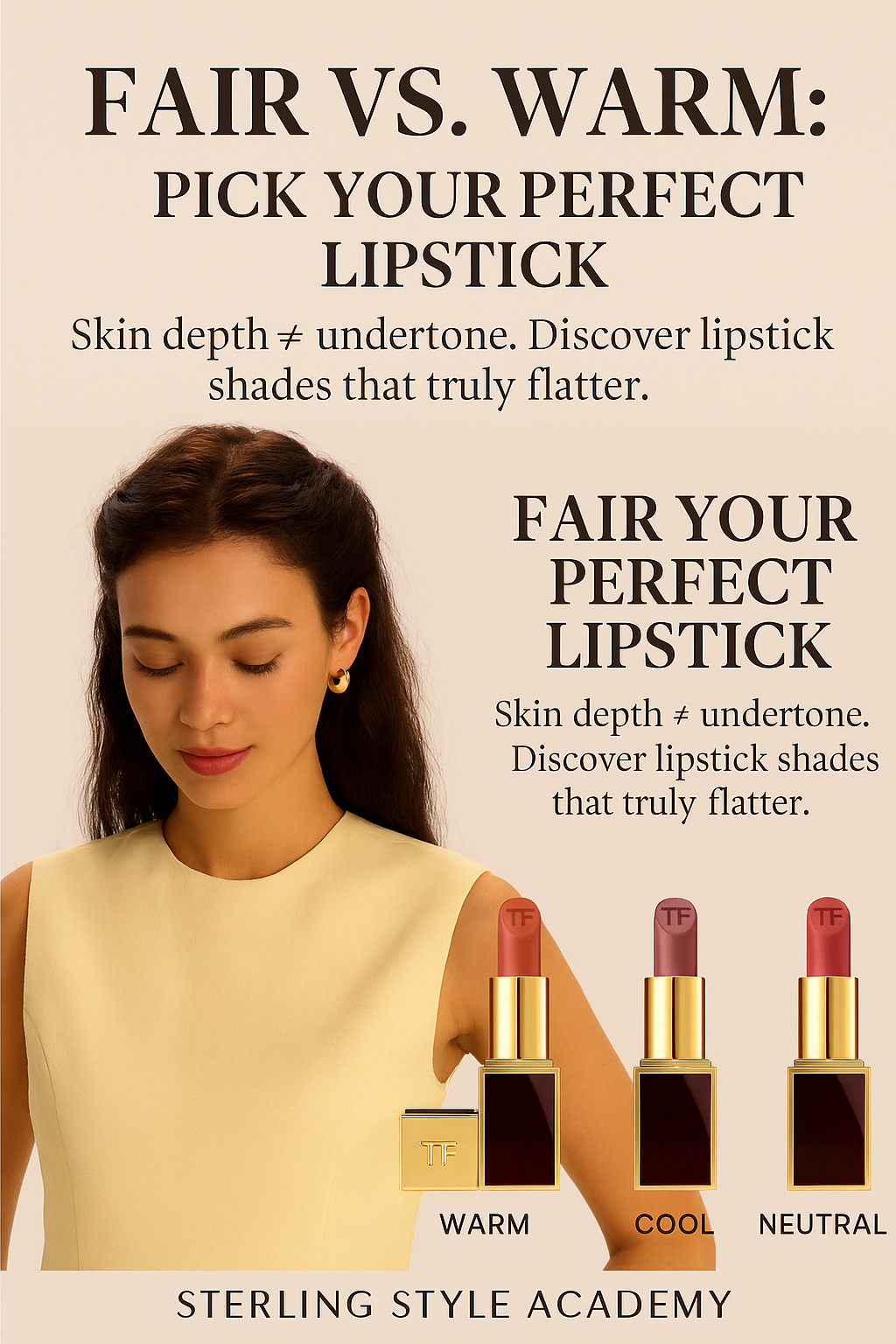
How to Pick Your Perfect Lipstick Pro Tip: Test Like a Pro—Daylight, Swipe, Blot, Reapply
When you try on lipstick:
1) Test in natural daylight or bright, color-balanced light. Store lighting can skew warm or cool.
2) Swipe once to see true pigment, not a heavy layer.
3) Blot with tissue. This reveals how the shade sits with your natural lip tone.
4) Reapply a light second layer for wear test.
5) Look for cues: Do your eyes look brighter? Does your skin look even and smooth without extra foundation? If yes, you’re likely in the right temperature family and depth.
Bonus: Photograph yourself near a window with your usual base makeup and again without foundation. If the color still flatters bare skin, you’ve likely found a keeper.
How to Pick Your Perfect Lipstick: Common Lipstick Pitfalls (and Easy Fixes)
- Problem: The shade looks great in the tube, but turns dull on your face.
Fix: Match temperature to your undertone first. Then adjust depth—go lighter or deeper as needed.
- Problem: Nudes make you look washed out.
Fix: Add a liner one to two shades deeper in the same undertone. Blend at the edges. Choose a nude with enough rosiness or warmth to match your undertone and skin depth.
- Problem: Bold reds feel “too much.”
Fix: Try a stain. Tap on the bullet with your finger for a diffused look. Choose a red in your undertone: blue-red for cool, tomato/brick for warm, balanced red for neutral.
- Problem: You love both warm and cool shades.
Fix: You may be neutral—or you’re enjoying a contrast effect with makeup and wardrobe. Keep both, but note which outfits and blush shades you pair them with.
How to Build a Wardrobe of Lipsticks You’ll Actually Wear
- Start with your undertone family: warm, cool, or neutral.
- Pick a daily shade, a polished meeting shade, and a statement shade.
- Vary finishes by occasion: creamy satin for daily comfort, matte for longevity, gloss for softness.
- Keep a balanced blush that echoes your lipstick’s undertone. A matching blush pulls the whole look together.
- Use liners as tools: warmer or cooler liners can steer a borderline lipstick toward your undertone.
Example capsule for each undertone:
- Warm: Pinky-peach nude, soft coral for day, brick or tomato red for night.
- Cool: Rose-mauve nude, berry pink for day, blue-red or wine for night.
- Neutral: Rosy-beige nude, muted coral/rose for day, balanced red for night.
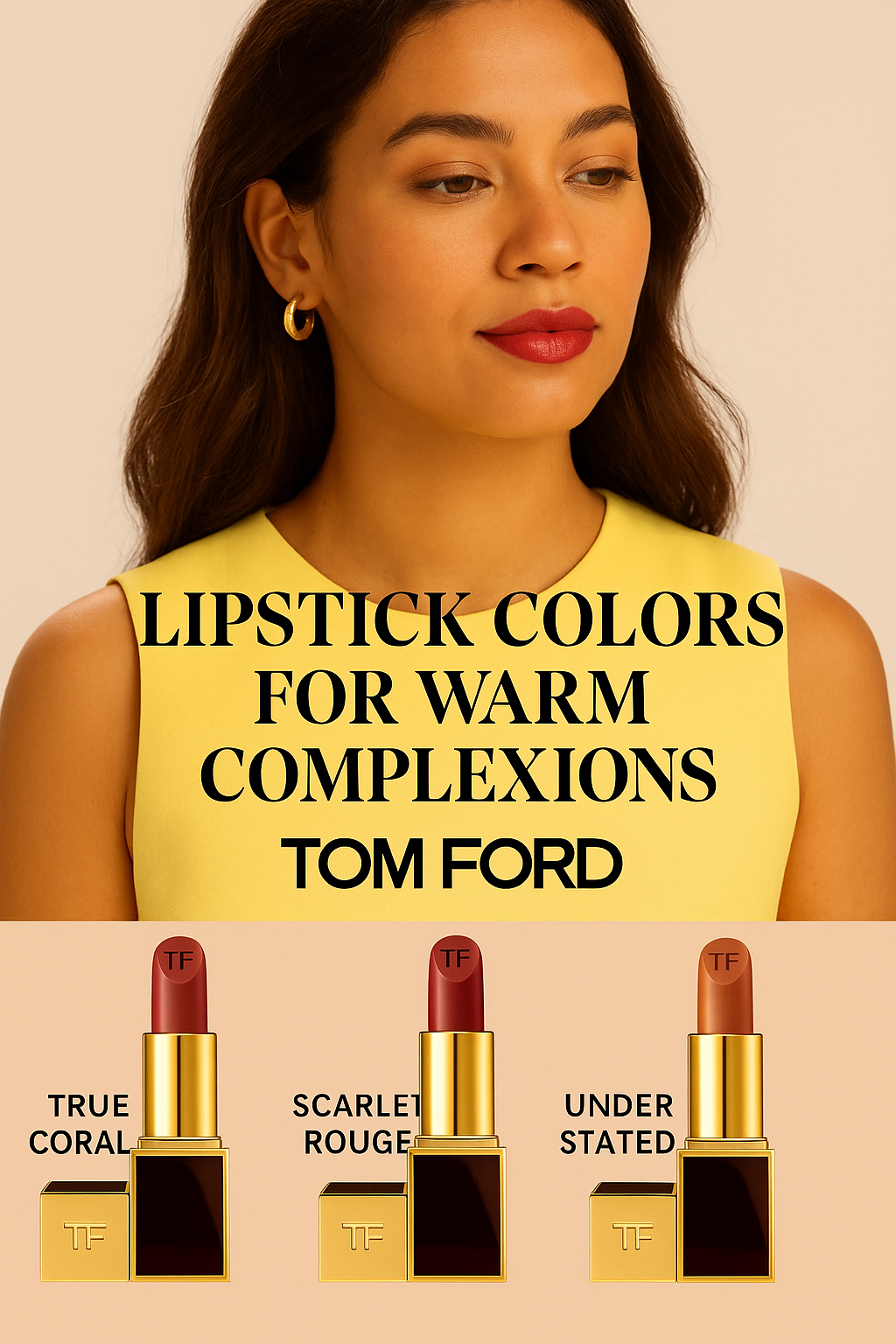
How to Pick Your Perfect Lipstick Quick FAQ
- Can my undertone change with a tan?
No. Your skin depth changes; your undertone remains the same.
- Can I wear outside my undertone?
Yes, with tweaks. Use liner to shift temperature, adjust blush, or pair with clothing in a coordinating color to balance the look.
- Which finish is most flattering?
It’s personal. Satin is a safe bet for most. Matte looks modern but may need prep (balm, gentle exfoliation). Sheers are forgiving and great for testing color families.
- What if two tests say warm and one says cool?
You may be neutral or on the cusp. Try both families and trust what brightens your features in daylight.
For Stylists and Beauty Pros: Learn to Diagnose Undertone with Confidence
If you want to turn this skill into a service, Sterling Style Academy’s Color Analysis Training shows you how to:
- Distinguish skin depth vs. undertone with confidence
- Use modern draping and digital tools to confirm temperature
- Build client color palettes across wardrobe and beauty
- Recommend lips, cheeks, and hair colors by undertone and depth
- Deliver professional consultations and upsell services
Ready to level up your expertise? Join the next cohort and start guiding clients to colors that truly flatter.
How to Pick Your Perfect Lipstick Conclusion: Match Temperature First, Then Set the Depth
The fastest route to a perfect lipstick is simple:
1) Find your undertone with quick tests in daylight.
2) Choose shades that share your temperature.
3) Adjust how light or deep the color is to suit your skin depth.
Start with the Tom Ford swatches listed here as your baseline, then fine-tune. Use the daylight test, the blot-and-reapply method, and watch for brighter eyes and smoother-looking skin. When you see those signals, you’ve found your shade.
Want structured training and client-ready tools? Explore Sterling Style Academy’s Color Analysis Training to master undertone and palette building.




